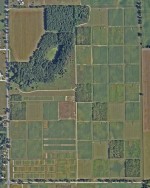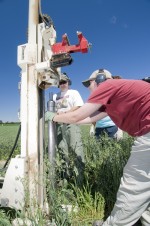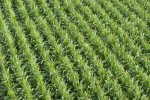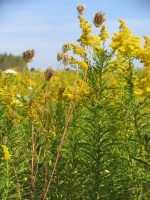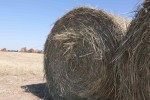Marginal lands unsuited for food crops can serve as prime real estate for meeting the nation’s alternative energy production goals.
In the current issue of the journal Nature, a team of researchers working at the MSU’s Kellogg Biological Station (KBS) Long Term Ecological Research (LTER) site at Michigan State University (MSU) shows that marginal lands represent a huge untapped resource to grow mixed species cellulosic biomass, plants grown specifically for fuel production, which could annually produce up to 5.5 billion gallons of ethanol in the Midwest alone.
"Understanding the environmental impact of widespread biofuel production is a major unanswered question both in the U.S. and worldwide," said Ilya Gelfand, lead author and MSU postdoctoral researcher. “We estimate that using marginal lands for growing cellulosic biomass crops could provide up to 215 gallons of ethanol per acre with substantial greenhouse gas mitigation.”
The notion of making better use of marginal land has been around for nearly 15 years, first broached by David Tilman and others working at the Cedar Creek LTER site. However, this is the first study to provide an estimate for the greenhouse gas benefits as well as an assessment of the total potential for these lands to produce significant amounts of biomass, he added.
Focusing on 10 Midwest states, Great Lakes Bioenergy researchers from MSU and the Pacific Northwest National Laboratory used 20 years of data from the KBS LTER site to characterize the comparative productivity and greenhouse gas impacts of different crops, including corn, poplar, alfalfa and old field vegetation.
They then used a supercomputer to identify and model biomass production that could grow enough feedstock to support a local biorefinery with a capacity of at least 24 million gallons per year. The final tally of 5.5 billion gallons of ethanol represents about 25 percent of Congress’ 2022 cellulosic biofuels target, said Phil Robertson, co-author and MSU professor of crop, soil and microbial sciences.
Robertson, the Principal Investigator of KBS, noted that this is another example of the value of taking a long view. “This work wouldn't have been possible without access to the long-term observations provided by NSF’s LTER funding,” he said. “Primary production in the successional sites didn't equilibrate for years, and being able to analyze 20 years of comparative data across all of our experimental treatments allowed us to provide an analysis that includes both good and bad climate years, which is crucial for providing a realistic assessment of potential productivity. It was also crucial for allowing us to parameterizeour net primary productivity models.”
Robertson noted that although the value of marginal land for energy production has been long-speculated and often discounted, “this study shows that these lands could make a major contribution to transportation energy needs while providing substantial climate and – if managed properly – conservation benefits.”
This also is the first study to show that grasses and other non-woody plants that grow naturally on unmanaged lands are sufficiently productive to make ethanol production worthwhile. Conservative numbers were used in the study, and production efficiency could be increased by carefully selecting the mix of plant species, Robertson added.
“With conservation in mind, these marginal lands can be made productive for bioenergy production and, in so doing, contribute to avoid the conflict between food and fuel production,” said Cesar Izaurralde, PNNL modeler and University of Maryland adjunct professor.
Additional benefits for using marginal lands include new revenue for farmers and other land owners; no indirect land-use effects, where land in another part of the globe is cleared to replace land lost here to food production; and no carbon debt from land conversion if existing vegetation is used or if new perennial crops are planted directly into existing vegetation.
The research was funded primarily by the Department of Energy’s Great Lakes Bioenergy Research Center, the National Science Foundation’s LTER program, and MSU AgBioResearch. Additional researchers from the Pacific Northwest National Laboratory and the University of Maryland contributed to this study.
About Michigan State University
Michigan State University has been working to advance the common good in uncommon ways for more than 150 years. One of the top research universities in the world, MSU focuses its vast resources on creating solutions to some of the world’s most pressing challenges, while providing life-changing opportunities to a diverse and inclusive academic community through more than 200 programs of study in 17 degree-granting colleges.
About LTER
The LTER program was created in 1980 by the National Science Foundation to conduct research on ecological issues that can last decades and span huge geographical areas. The network brings together a multi-disciplinary group of more than 2000 scientists and graduate students. The 26 LTER sites encompass diverse ecosystems in the continental United States, Alaska, Antarctica, and islands in the Caribbean and the Pacific—including deserts, estuaries, lakes, oceans, coral reefs, prairies, forests, alpine and Arctic tundra, urban areas, and production agriculture.

 Enlarge this image
Enlarge this image